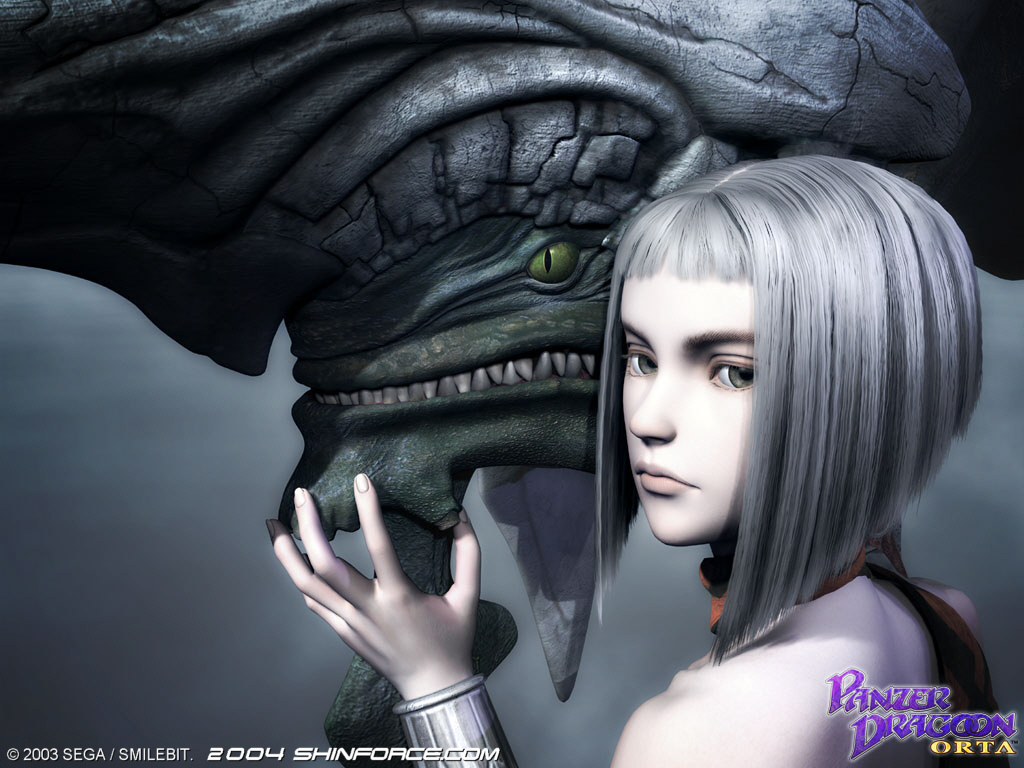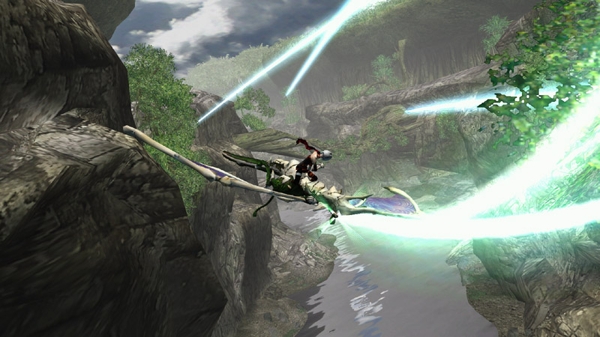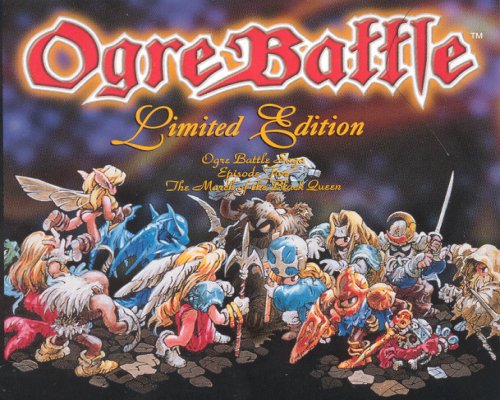Last updated on March 4, 2013
Until next Sunday or so, I’ll be out of town. That doesn’t mean I have nothing for you guys; I’ve got everything covered, one entry a day per usual.
Welcome to Monday Update! Yay! Obscure games!
Panzer Dragoon Orta – Well, here’s a game from a decade ago. Created by Sega originally, this sequel (and, as of now, the last) in the Panzer Dragoon series hasn’t made much impact in the years since. It probably wasn’t a good idea to make this Xbox exclusive, but then again, was the decision to make Jet Set Radio Future exclusive any worse (answer: no). The audience for both was limited; thank God for backwards compatibility, because this game runs beautifully on a 360 even without HD. It’s a beautiful game with great art design, and I haven’t seen another game quite like it. A secret confession: I never owned a Saturn, so I’ve never played a Panzer Dragoon game before. I just happened to own this one due to good worth of mouth a few years ago. Like anyone’s backlog, mine is filled with these little gems.
Telling a story in a made-up language akin to ICO or Shadow of the Colossus, the game throws you onto a dragon and says “start shooting things”! My best comparison would be Star Fox with its 3D linear level design, but I think that sells the game short. It’s what we would today call an “on-rails” shooter – that is, you continually move forward while attacking and dodging enemy fire. PDO, however, allows you to be attacked from every direction around your flying steed, which means the game constantly throws more bullets and enemies than you can shake a stick at. Analog triggers give you the ability to make a quick 90 degree or 180 degree turn, and a radar helps you keep check of where enemies spawn.
Not only can you move the dragon to dodge (not if you’re looking behind the dragon, though; keep that in mind), but you can “glide”, akin to a boost attack that dodges and/or destroys enemies. You can also slow the dragon down, and both avoidance methods have their place. A lock-on laser function and regular shot round out a seemingly basic arsenal, but trust me – you’ll be plugging away because every single thing has lots of health, requiring your utmost attention at all times. Even then, the developer gives the dragon three different forms – Base, Glide, and Heavy – each of which excels at some function, whether it be bullets, glide (pretty obvious which one), movement speed, or Berzerk attacks (like a super meter move from a fighting game, or the bombs of a shmup). Heck, that’s a lot to remember, even to use effectively under constant enemy fire. Not everything can be dodged, nor can you use lock-on laser or normal shot universally. It’s a game of trial and error, and there are no checkpoints in the levels (except at bosses). This makes every moment that you take damage a horrible slight, since you may not survive the next section based on your performance in the next.
Honestly, it’s very difficult. I’m playing on Normal mode and much of my time has been spent replaying levels to save as much life as possible. This isn’t a game for everyone, and it’s extremely unforgiving. That doesn’t make victory any less satisfying! Considering how cheap it is (and how prolific 360 consoles are), I’d say buy it; it’s sub-ten dollars at this point; you have no excuse. Rez plays just like this, but I like being on a dragon better.
Ogre Battle – I originally owned the PS1 version, but something compelled me to trade the game, along with a vast collection, for an Xbox and some modern games. Well, I finally got around to playing this on the WII VC (without the horrible PS1 loadtimes), and I’m duly surprised.
I’m not sure if this is the first real-time/turn-based strategy hybrid ever made, but it’s pretty close. The game presents you with a map, and to win you have to beat the boss of that level. Of course, when we talk “boss”, we mean “leader of an army garrisoned in the capital”, so that means he’s throw armies at you left and right. You also have an army; you can move units to garrison the various towns and temples to fight back the “empire”. Cities provide money and tribute to continue your war machine, buy supplies, and all around defeating the empire. What’s interesting about this is that everything moves in real time. Sure, you can pause the game to think about your next move, but every action happens in real time. This creates a certain tension lacking from Yasumi Matsuno’s later work – say, Final Fantasy Tactics or Tactics Ogre. You can’t just throw a few units out there and expect to win; the enemy will send a constant stream your way, and may even loop around your forward front to take cities behind the front lines. It’s interesting and fun.
In the same way as a real war, you can’t actually control the individual actions of your units. Instead, they fight automatically for a certain number of turns. You set their formation (melee in front, casters in back) prior to deployment (which costs money). It’s a weird system, honestly, and the only way you can change the outcome is to use tarot cards, each of which has a certain effect in battle. Many actions in the game give you tarot cards, from liberating cities to random happenstance, but this provides a layer of strategy to boss fights. Tarot cards count as your personal unit, so only your leader gains experience if a tarot kills it.
As well, you’re contending with your personal reputation. See, your Lord (as they call you) is the leader of a resistance movement. Every character has an alignment rating – the higher, the more towards “good” they are aligned. Most actions affect reputation in some way – gaining too high a level means people perceive you as a bully, and your reputation will plumment. Liberating towns with low alignment units also makes your reputation go down. Losing a city makes your reputation plummet. Reputation, in turn, affects a lot of unseen mechanics at the back of the game, from what characters you can recruit and what ending (out of too many to list) you will get. I like this system of “morality” – to be good is, in fact, harder than evil. Not every action has a straightforward result, nor will you know what you missed in the first place by having reputation too high or too low. Things are never clear in an environment of war, and like Matsuno’s later work, it makes these themes prevalent without inundating the player. It’s subtle yet complex.
So yeah, play Ogre Battle. It’s a quirky open-ended little gem that requires some real thought, both mechanically and intellectually.
———————————————————————————————————————————————————————————————————————–
That’s it for this week’s Monday Update. Lots of reviews this week; no List entries, but I’ll get to them! I may be on vacation, but I work hard to give you content for a whole nine days regardless.



